Themed collection Crystalline Materials for Environmental Remediation

Covalent organic frameworks (COFs): perspectives of industrialization
In this highlight, we review the state-of-the-art development of COFs from an industrial point of view in five aspects, including their types, growth mechanisms, synthetic methods, processability and applications.

CrystEngComm, 2018,20, 1613-1634
https://doi.org/10.1039/C7CE02079A
Hierarchically structured magnesium based oxides: synthesis strategies and applications in organic pollutant remediation
In this highlight, we review the design and formation of MgO based hierarchical structures and cover some selected examples on their applications in adsorption of organic contaminants.
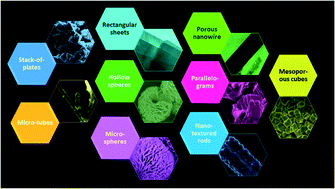
CrystEngComm, 2017,19, 6913-6926
https://doi.org/10.1039/C7CE01755C
Hollow CuxO (x = 2, 1) micro/nanostructures: synthesis, fundamental properties and applications
In this review, we comprehensively summarize the important advances in hollow CuxO micro/nanostructures, including the universal synthesis strategies, the interfacial Cu–O atomic structures as well as the intrinsic properties, and potential applications. Remarks on emerging issues and promising research directions are also discussed.
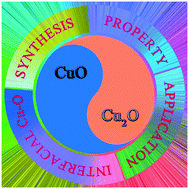
CrystEngComm, 2017,19, 6225-6251
https://doi.org/10.1039/C7CE01530E
Experimental and theoretical investigations of the gas adsorption sites in rht-metal–organic frameworks
This highlight article reviews the experimental and theoretical studies that have been implemented to investigate the sorption sites for gases in rht-metal–organic frameworks.
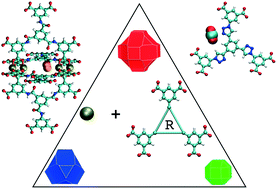
CrystEngComm, 2017,19, 4646-4665
https://doi.org/10.1039/C7CE01032J
Perspectives on metal–organic frameworks with intrinsic electrocatalytic activity
This highlight article focuses on the rapidly emerging area of electrocatalytic metal–organic frameworks (MOFs) with a particular emphasis on those systems displaying intrinsic activity.
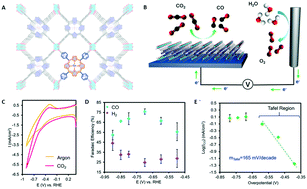
CrystEngComm, 2017,19, 4049-4065
https://doi.org/10.1039/C7CE00215G
Metal–organic frameworks with Lewis acidity: synthesis, characterization, and catalytic applications
In this highlight, we review the recent development in the design and synthesis of metal–organic frameworks with Lewis acidity, the characterization techniques of Lewis acid sites, and their applications in heterogeneous catalysis.
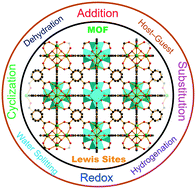
CrystEngComm, 2017,19, 4066-4081
https://doi.org/10.1039/C6CE02660E
Overview of the strategic approaches for the solid-state recognition of hydrated anions
This review highlights the solid state recognition of hydrated anions an expanding area in the domain of supramolecular chemistry.
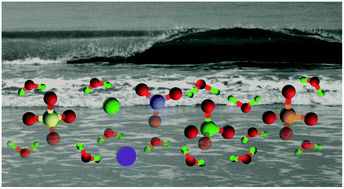
CrystEngComm, 2017,19, 1343-1360
https://doi.org/10.1039/C6CE02438F
Efficient removal of low concentration methyl mercaptan by HKUST-1 membrane constructed on porous alumina granules
A HKUST-1 metal–organic framework membrane was constructed on porous Al2O3 granules for the first time for the removal of low concentration CH3SH.
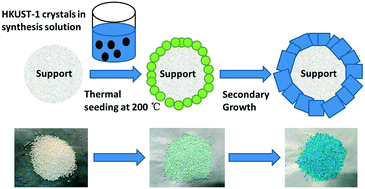
CrystEngComm, 2018,20, 407-411
https://doi.org/10.1039/C7CE01922J
Selective adsorption behaviour of carbon dioxide in OH-functionalized metal–organic framework materials
The theoretically optimal adsorption locations in hydroxyl (OH)-decorated metal–organic frameworks show that the captured CO2 molecules interact with the cis-μ2-OH groups in an end-on mode, which shows a moderate to weak hydrogen bond.
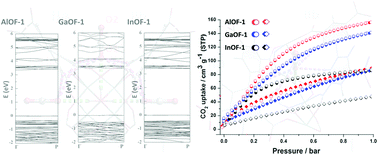
CrystEngComm, 2017,19, 5346-5350
https://doi.org/10.1039/C7CE01195D
Supramolecular porphyrin-based metal–organic frameworks: Cu(II) naphthoate–Cu(II) tetrapyridyl porphine structures exhibiting selective CO2/N2 separation
Porphyrin-based MOFs with copper acetate or copper 1-naphthoate exhibit different pore structure and unique CO2/N2 selectivity.

CrystEngComm, 2017,19, 5173-5177
https://doi.org/10.1039/C7CE01138E
Synthesis of Bi2O3–Bi4V2O11 heterojunctions with high interface quality for enhanced visible light photocatalysis in degradation of high-concentration phenol and MO dyes
Bi2O3–Bi4V2O11 heterostructures with high interface quality were synthesized by calcining Bi2VO5.5–Bi(OHC2O4)·2H2O precursors. The Bi2O3–Bi4V2O11 heterostructure exhibits outstanding photocatalytic activity for degrading phenol and MO dyes with high concentration under visible light irradiation.
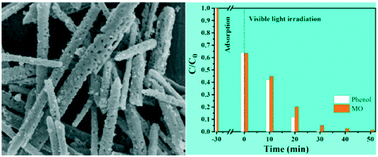
CrystEngComm, 2018,20, 2553-2561
https://doi.org/10.1039/C8CE00101D
Synthesis of a novel one-dimensional BiOBr–Bi4O5Br2 heterostructure with a high quality interface and its enhanced visible-light photocatalytic activity
A novel rod-like BiOBr–Bi4O5Br2 heterostructure with a high quality interface is synthesized by calcining a BiOBr precursor in air. The BiOBr–Bi4O5Br2 heterostructure exhibits outstanding photocatalytic activity for degrading RhB dyes at high concentrations under visible/solar light irradiation.
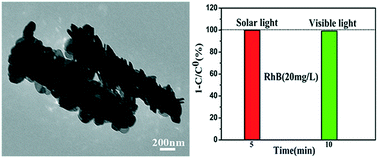
CrystEngComm, 2018,20, 2292-2298
https://doi.org/10.1039/C8CE00157J
A water stable microporous metal–organic framework based on rod SBUs: synthesis, structure and adsorption properties
A microporous metal–organic framework based on rod SBUs with high water stability and good selectivity for CO2 separation has been successfully synthesized.

CrystEngComm, 2018,20, 2169-2174
https://doi.org/10.1039/C8CE00064F
A highly porous acylamide decorated MOF-505 analogue exhibiting high and selective CO2 gas uptake capability
A highly porous acylamide decorated MOF-505 analogue with optimized pores, open copper sites and acylamide groups exhibits large and selective CO2 adsorption over CH4 and N2 under ambient conditions.

CrystEngComm, 2018,20, 1874-1881
https://doi.org/10.1039/C8CE00103K
WO3-decorated ZnO nanostructures for light-activated applications
Calyx-like ZnO nanostructures decorated by WO3 nanoparticles are investigated for NOX degradation and self-cleaning end-uses.
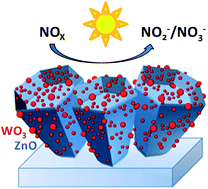
CrystEngComm, 2018,20, 1282-1290
https://doi.org/10.1039/C7CE02148H
Syntheses of copper–iodine cluster-based frameworks for photocatalytic degradation of methylene blue
Cu–I cluster-based MOFs show a broad range of absorption in the visible region and exhibit excellent photocatalytic degradation of methylene blue dye under visible light.
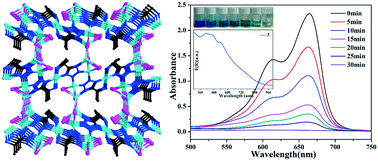
CrystEngComm, 2018,20, 1232-1236
https://doi.org/10.1039/C7CE02192E
Incorporating cuprous-halide clusters and lanthanide clusters to construct Heterometallic cluster organic frameworks with luminescence and gas adsorption properties
A series of heterometallic cluster organic frameworks based on cuprous-halide Cu4I4 clusters and lanthanide clusters have been successfully synthesized under solvothermal conditions.
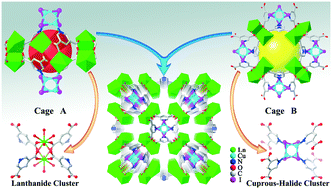
CrystEngComm, 2018,20, 738-745
https://doi.org/10.1039/C7CE01963G
CO2 adsorption and separation in covalent organic frameworks with interlayer slipping
In layered COFs, slipping results in non-monotonous variation in CO2 adsorption and higher uptakes were found near a slipping distance of 10 Å.
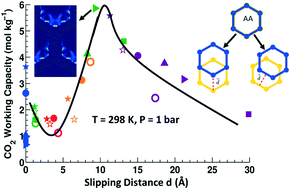
CrystEngComm, 2017,19, 6950-6963
https://doi.org/10.1039/C7CE01647F
Capture of volatile iodine by newly prepared and characterized non-porous [CuI]n-based coordination polymers
Four new non-porous copper(I) iodide coordination polymers have been synthesized and demonstrate volatile iodine capture with simultaneous fluorescence quenching.
![Graphical abstract: Capture of volatile iodine by newly prepared and characterized non-porous [CuI]n-based coordination polymers](/en/Image/Get?imageInfo.ImageType=GA&imageInfo.ImageIdentifier.ManuscriptID=C7CE01193H&imageInfo.ImageIdentifier.Year=2017)
CrystEngComm, 2017,19, 6116-6126
https://doi.org/10.1039/C7CE01193H
Alcohol-assisted self-assembled 3D hierarchical iron (hydr)oxide nanostructures for water treatment
Self-assembled 3D hierarchical iron (hydr)oxides are synthesized with different alcohol additives for water treatment.
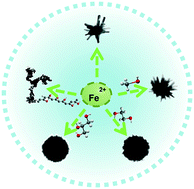
CrystEngComm, 2017,19, 5926-5933
https://doi.org/10.1039/C7CE01320E
One-step synthesis of two Wells–Dawson arsenotungstate hybrids via M–O–M bridges for efficient adsorption and selective separation of organic pollutants
Two chain-like Dawson arsenotungstate hybrids with M–O–M and Cu–L linker have been hydrothermally synthesized, which have good electrocatalytic activity and selective adsorption properties for MB.
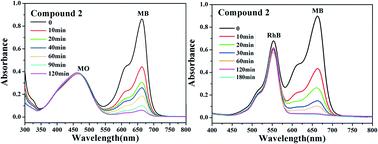
CrystEngComm, 2017,19, 5653-5661
https://doi.org/10.1039/C7CE01307H
A family of microscale 2 × 2 × 2 Pocket Cubes
A family of Pocket Cubes with different chemical compositions but with the same overall mesoscale microstructures was prepared for potential applications in energy storage and water treatment.
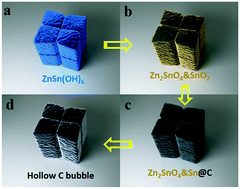
CrystEngComm, 2017,19, 5422-5431
https://doi.org/10.1039/C7CE00760D
Computational screening of covalent organic frameworks for the capture of radioactive iodine and methyl iodide
Large-scale computational screening results show that COFs are promising materials for the capture of radioactive iodic contaminants from nuclear wastes.
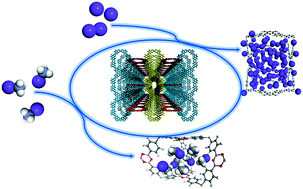
CrystEngComm, 2017,19, 4920-4926
https://doi.org/10.1039/C7CE00118E
Amino acid-assisted controlling the shapes of rutile, brookite for enhanced photocatalytic CO2 reduction
Rutile and brookite titania with tunable shape have been synthesized. The investigation results show that the photcatalytic CO2 reduction activity of rutile increases with increasing percentage of {111} surface and brookite with exposed {210} facets exhibit a notable photocatalytic reduction of CO2 to methanol.
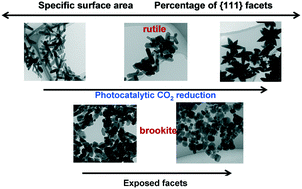
CrystEngComm, 2017,19, 4519-4527
https://doi.org/10.1039/C7CE00566K
Luminescent sensing and photocatalytic degradation properties of an uncommon (4,5,5)-connected 3D MOF based on 3,5-di(3′,5′-dicarboxylphenyl)benzoic acid
An uncommon microporous MOF 1 used as fluorescent chemosensor for NACs and as photocatalyst.
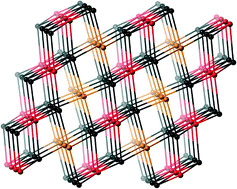
CrystEngComm, 2017,19, 4368-4377
https://doi.org/10.1039/C7CE01012E
Comparing the mechanism and energetics of CO2 sorption in the SIFSIX series
Molecular simulations have yielded insights into the distinct CO2 sorption mechanisms and energetics exhibited by different members of the “SIFSIX” series.
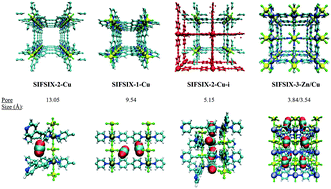
CrystEngComm, 2017,19, 3338-3347
https://doi.org/10.1039/C7CE00594F
An anionic metal–organic framework constructed from a triazole-functionalized diisophthalate featuring hierarchical cages for selective adsorptive C2H2/CH4 and CO2/CH4 separation
An anionic copper-based metal–organic framework based on a custom-designed triazole-functionalized diisophthalate ligand exhibits promising potential for the separation of C2H2–CH4 and CO2–CH4 gas mixtures under ambient conditions.

CrystEngComm, 2017,19, 2795-2801
https://doi.org/10.1039/C7CE00661F
3D hierarchical golden wattle-like TiO2 microspheres: polar acetone-based solvothermal synthesis and enhanced water purification performance
A polar solvent (acetone)-based solvothermal reaction was successfully used to synthesize highly efficient 3D hierarchical golden wattle-like TiO2 microsphere structures.
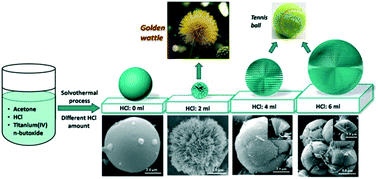
CrystEngComm, 2017,19, 2187-2194
https://doi.org/10.1039/C7CE00080D
A series of chiral metal–organic frameworks based on fluorene di- and tetra-carboxylates: syntheses, crystal structures and luminescence properties
Chiral MOFs built from copper and fluorene-based optically pure ligands possess various topologies and porosities and present luminescence properties.
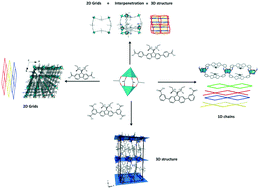
CrystEngComm, 2017,19, 2042-2056
https://doi.org/10.1039/C7CE00108H
Selective synthesis of WO3 and W18O49 nanostructures: ligand-free pH-dependent morphology-controlled self-assembly of hierarchical architectures from 1D nanostructure and sunlight-driven photocatalytic degradation
Simple inorganic routes for the selective synthesis of WO3 and W18O49 nanostructures with variable size and self-assembly are reported.
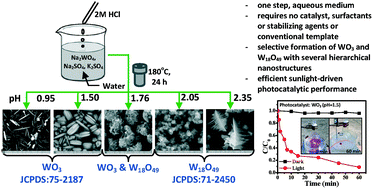
CrystEngComm, 2017,19, 2096-2105
https://doi.org/10.1039/C6CE02518H
Sequential amine functionalization inducing structural transition in an aldehyde-containing zeolitic imidazolate framework: application to gas separation membranes
The SIM-1 (sod) to ZIF-93 (rho) structural change through post-synthetic amine functionalization tunes the membrane performance in the separation of gas mixtures.
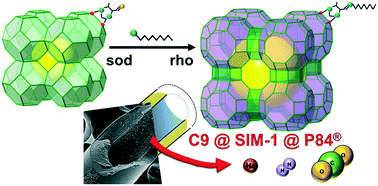
CrystEngComm, 2017,19, 1545-1554
https://doi.org/10.1039/C7CE00086C
A novel methoxy-decorated metal–organic framework exhibiting high acetylene and carbon dioxide storage capacities
A new microporous metal–organic framework with optimized pore space and open metal sites has been realized, exhibiting high acetylene and carbon dioxide storage capacities.
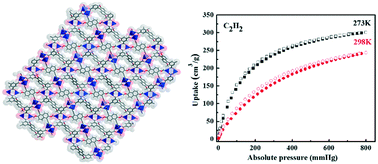
CrystEngComm, 2017,19, 1464-1469
https://doi.org/10.1039/C6CE02291J
General synthesis of metal oxide hollow core–shell microspheres as anode materials for lithium-ion batteries and as adsorbents for wastewater treatment
Co3O4, NiO and Mn2O3 hollow core–shell structures were prepared via a precipitation route combined with calcination.
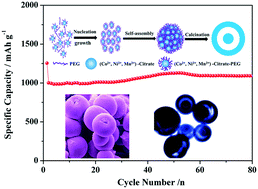
CrystEngComm, 2017,19, 1311-1319
https://doi.org/10.1039/C6CE02563C
Fabrication of novel Z-scheme InVO4/CdS heterojunctions with efficiently enhanced visible light photocatalytic activity
Novel Z-scheme InVO4/CdS heterojunction photocatalysts have been successfully synthesized for the first time via a microwave-assisted process, followed by a mild hydrothermal method.
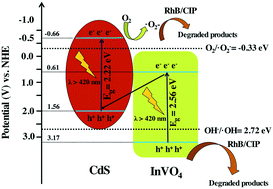
CrystEngComm, 2017,19, 982-993
https://doi.org/10.1039/C6CE02465C
One-step synthesis of ultrathin nanobelts-assembled urchin-like anatase TiO2 nanostructures for highly efficient photocatalysis
Nanostructured TiO2 materials with a controlled morphology and structure have drawn considerable attention to both fundamental research and practical applications owing to their unique characteristics.
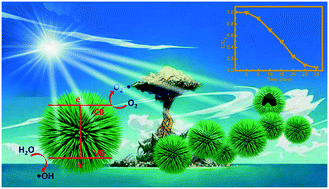
CrystEngComm, 2017,19, 129-136
https://doi.org/10.1039/C6CE02241C
About this collection
The capability of the natural environment to absorb the waste products of human enterprise and industry is being put under great strain by the growth in the world’s population and economy. Environmental remediation – the decontamination of soil, air, and water – and waste stream treatment are of the highest priority. From carbon dioxide capture by MOFs and other porous materials, to the photocatalytic degradation of organic pollutants by crystalline nanomaterials, this post-publication collection showcases work that demonstrates how Crystal Engineering is being applied to solve one of humanity’s most pressing challenges.